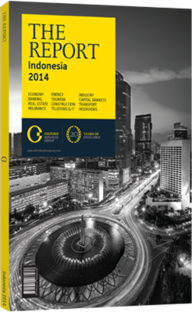Balancing growth: The central bank is taking action to ward off macroeconomic challenges
With economic growth slowing, inflation rising and the currency weakening, Indonesia has some tough macroeconomic challenges ahead. However, the government has responded to the situation with a variety of monetary and fiscal policy tools, including raising interest rates while at the same time rolling out fiscal stimulus measures.
Slowing Growth
In August 2013 the central statistics agency issued GDP figures for the second quarter of 2013, showing that the economy had expanded by its slowest rate since the third quarter of 2010. Year-on-year growth in the second quarter eased to 5.92%, down from the 6.03% registered in the previous three-month term, with the April-toJune result being the fourth quarter in a row that the rate of economic expansion had slowed.
The situation has been compounded by a fall in the value of the rupiah, which had dropped more than 20% against the dollar as of December 2013, and a widening of the current account deficit as export growth has failed to keep pace with Indonesia’s appetite for imported goods.
The current account has been in the red for the past six quarters, having previously been in positive territory – with the exception of 2008 – since 2005. While the current account deficit narrowed to $8.4bn in the third quarter of 2013, a drop from the nearly $10bn deficit posted in the second quarter of 2013, this was still the second-largest deficit in the last five years. It is therefore likely to be some time before the deficit is erased in full.
The government has acknowledged that it may not be able to meet its short-term targets. “We had set a 6.3% growth target for this year, but it may be difficult to achieve this,” M. Chatib Basri, the finance minister, said in August 2013. “To achieve an economic growth of 6.3%, we should have 6.6% economic growth [in September], which is difficult.”
In its August 15, 2013 meeting, the central bank, Bank Indonesia (BI), left its key interest rate unchanged, a move seen as intended to foster growth, following a decision to raise rates to 6.5% in July, as inflation hit 8.61%, a steep climb from the 5.9% of the month before and the highest level in more than four years. However, in late August, BI reversed course, raising its benchmark rate to 7% in an attempt to slow capital outflow as the rupiah continued to fall. In the subsequent months, BI gradually raised interest rates to 7.5% as of November 12, 2013, with inflation slowing to 8.37% for the month.
A Hike In Rates
While high interest rates should help curb inflation and slow the withdrawal of foreign capital, they could also make it more difficult for the government to achieve its target of above-6% growth, particularly with domestic consumption seen as the locomotive of the economy.
In August 2013 Basri said that President Susilo Bambang Yudhoyono favoured a “keep buying” policy that would lift household consumption, the largest single contributor to the economy. “So, if consumption is high, GDP would be high,” Basri said. “Household consumption and government expenditure will boost the economy because investments are expected to reduce, with no guarantee of export growth.”
In the short run, the government has said that it will introduce a stimulus package, as well as tax holidays, in an attempt to reduce the current account deficit and boost growth. However, the market responded poorly to the plan, with stock and bond values, as well as the rupiah, declining in the days following the announcement. In the medium term the 2014 budget could provide support to the economy, with the state indicating that it will promote domestic consumption, in addition to increased spending on infrastructure construction and human resource development, both of which are intended to lift productivity. However, the effect of these investments will take time to be felt. In February 2013 Central Statistics Agency reported that Indonesia’s GDP grew at an annual rate of 5.78% in 2013.
You have reached the limit of premium articles you can view for free.
Choose from the options below to purchase print or digital editions of our Reports. You can also purchase a website subscription giving you unlimited access to all of our Reports online for 12 months.
If you have already purchased this Report or have a website subscription, please login to continue.

